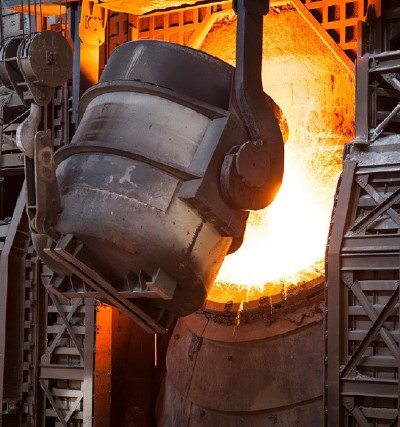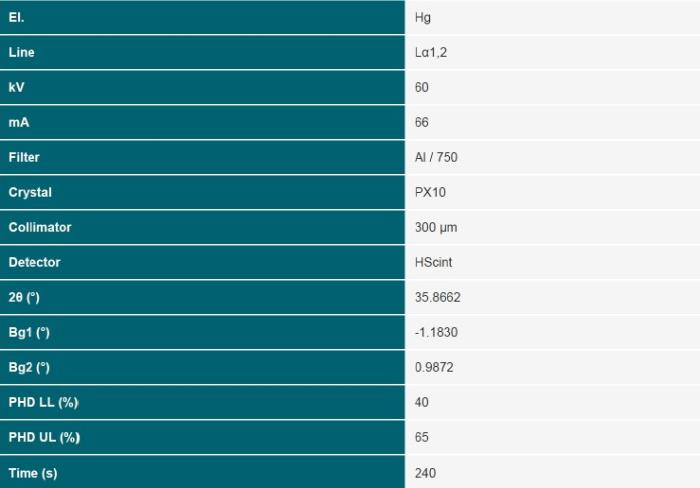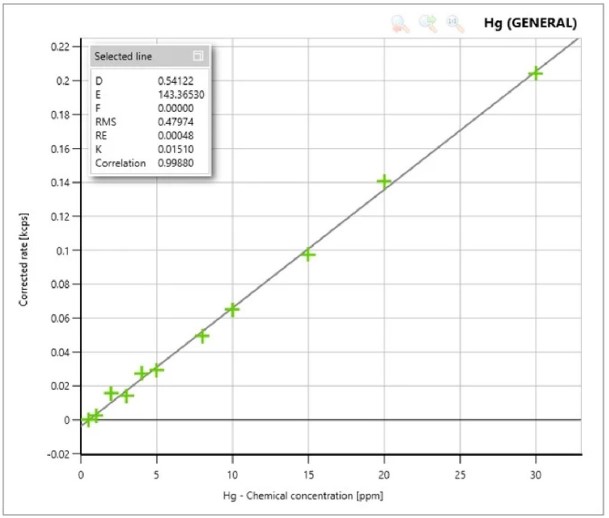Malvern Panalytical의 'ZETIUM 4KW: TRACE-ANALYSIS OF HG IN FE-ORE'에 관한 응용자료의 주요 내용은 다음과 같다.
Introduction
This datasheet investigates the capabilities of the Zetium 4 kW, a wavelength dispersive X-ray fluorescence spectrometer, as a tool to do Trace-analysis of Mercury in Iron-ore.
Application Background
During the production of Steel Iron-ore is burned which causes the emission of Mercury into the air. In order to control this emission, the amount of Mercury in the Iron-ore must be known.
This application note demonstrates the analytical capability and stability of the Zetium to analyze Trace-levels of Mercury in Iron-ore.
Instrumentation
A Zetium spectrometer, configured with 4 kW power, an X-Y sample handler, and advanced analytical software was used to generate the data presented in this datasheet. The system is engineered for excellence in terms of analytical accuracy, precision, and operational performance.
Sample preparation
All samples were prepared as pressed pellets. 20.0 grams of dried sample material was mixed with 1.0 gram UltraWax((CH2)n). After mixing, the powder was pressed for 30 seconds at 300 kN using a Herzog automatic press.
Measurement program
The used measurement program can be found in Table 1. The used time is the total time on both the peak and background positions.
Table 1. Measurement program to determine trace-levels of Hg in Fe-ore
Calibration results
Figure 1 shows the calibration plot for Mercury. The measured intensities correspond with the expected concentrations in the samples, resulting in linear calibration curves.
Figure 1. Calibration curve for Hg
The calibration curve of Hg(Figure 1) was obtained using the channel settings as described in Table 1, with a measurement time of 120 seconds on the peak and 60 seconds on both background positions. In Table 2 the calculated Lower Limit of Detection(LLD) can be found.
Table 2. Lower Limit of Detection (LLD) for Hg, based on 120 seconds measurement at the peak and 2x 60 seconds measurement time on the background positions
Precision
To show the precision of the method, three samples were measured for 20 repeat cycles including loading and unloading of the sample.
Table 3. Results of 20 repeat cycles, RootMeanSquare (RMS) is the 1 sigma error
Conclusion
The data presented in this application note demonstrate the capability of the Zetium WDXRF spectrometer Trace-analysis of Mercury in Iron-ore. The used measurement channel result in a measurement time of just 240 seconds.
The perfect precision of the Zetium is proven with repeat measurements. The results illustrate the stability and robustness of the Zetium. The high sensitivity of the Zetium enables the very low limits of detection for Mercury.
Based on the data in this application note it may be concluded that the Zetium spectrometer is perfectly suited for the trace analysis of Mercury in Iron-ore. Based on a measurement time of 240 seconds on Hg, an LLD of 0.64 ppm can be reached. The standard deviation close to the LLD is just 0.3ppm.
Malvern Panalytical의 'XRF Zetium'에 대한 궁금한 내용은 본 원고자료를 제공한 말번 파날리티칼 코리아를 통하여 확인할 수 있다.
Reference(참고자료): 말번 파날리티칼 응용노트
Model Name(모델명): XRF Zetium
The Person in Charge(담당자): Kim Seungji
Maker(제조사): Malvern Panalytical
Country of Origin(원산지): Netherlands
Mail inquiry: korea.info@malvernpanalytical.com
Data Services(자료제공): Malvern Panalytical Korea
<이 기사는 사이언스21 매거진 2023년 7월호에 게재 되었습니다.>








